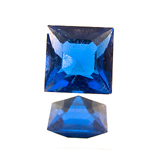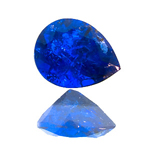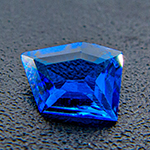Haüyne
Also: Hauyn
Haüyne is a rather rare mineral of the sodalite group and one of the possible constituent minerals of lapis lazuli.
Haüyne shop


Origin of name: haüyne was found by Chaplain Gismondi at Lake Nemi (Lago di Nemi) in the Italian Latium region and described as Latialite in an unpublished mineralogical treaty in 1803. Gismondi handed his treaty to the Danish scolar Tønnes Christian Bruun-Neergaard (1776–1824), who used it to present the new mineral to the general public in a lecture at the National Institute on May 25th 1807. Since at that time it was not common to name minerals after their location and since a second location at Monte Somma (near the Vesuvius volcano) had been discovered, Bruun-Neergaard suggested to name the mineral hauyne (today correctly: haüyne) after French mineralogist René-Just Haüy (1743–1822) .
Source: Wikipedia
Synonyms and trade names: hauyne, antiquated: hauynite and latialite
Can be confused with: other blue gemstones like apatite and Paraïba tourmaline.
Localities: mindat.org lists a number of deposits the world over, e.g. in Italy, Austria, the USA, Canada, several African states, Afghanistan and even Greenland.
However, by far the most important deposits are in the Eifel district in Germany, to date (2014) the only known source of gem quality blues.

Handling: haüyne has perfect cleavage and it is rather brittle. On top of that it is also very sensitive to heat and acids. Unset before soldering, do not clean ultrasonically and do not to expose to acids or galvanic baths.
Worth knowing: so far (2014) the largest known haüyne crystal measures appr. 3.2cm and was found by a private prospector in October 2012. It is in the possession of the Technical University "Bergakademie Freiberg". Most crystals are smaller than 5mm and thus facetted gems of more than half a carat are very rare and command very high prices indeed.
Haüyne shop
 Deutsch
Deutsch